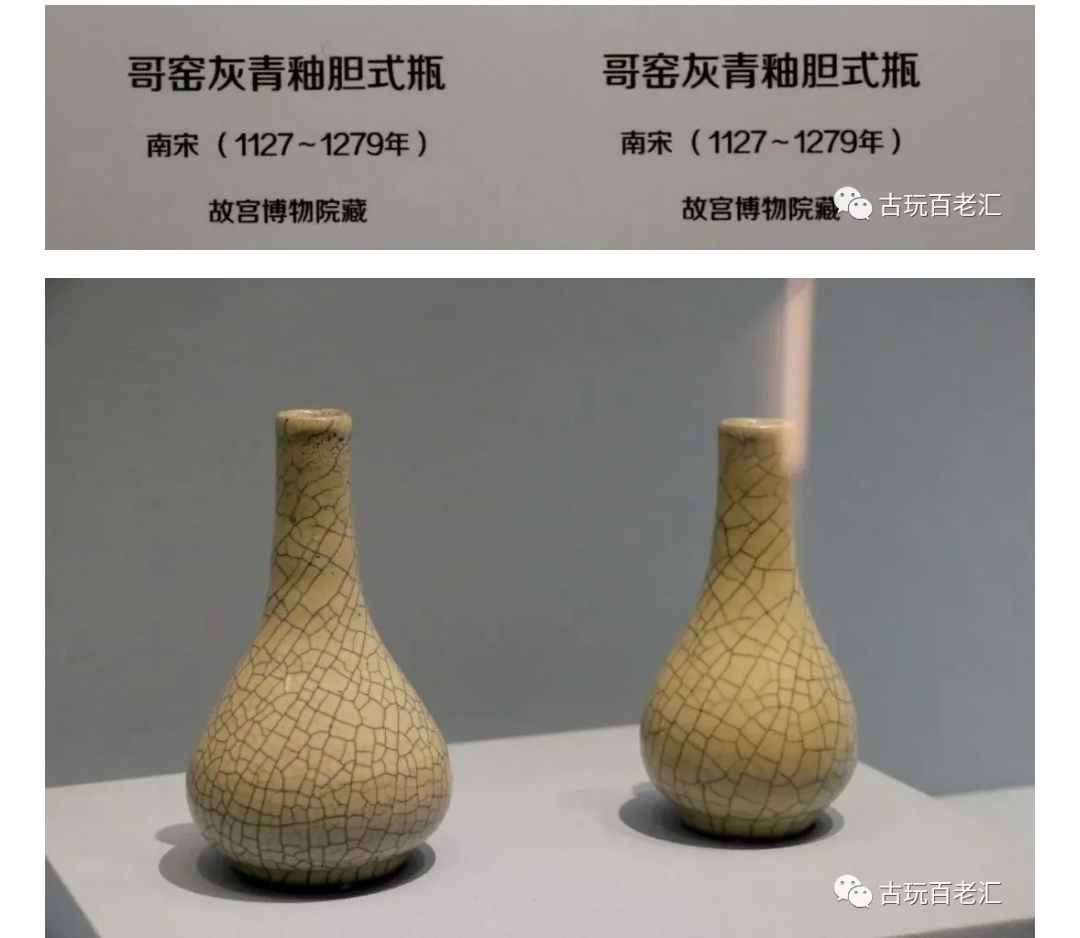
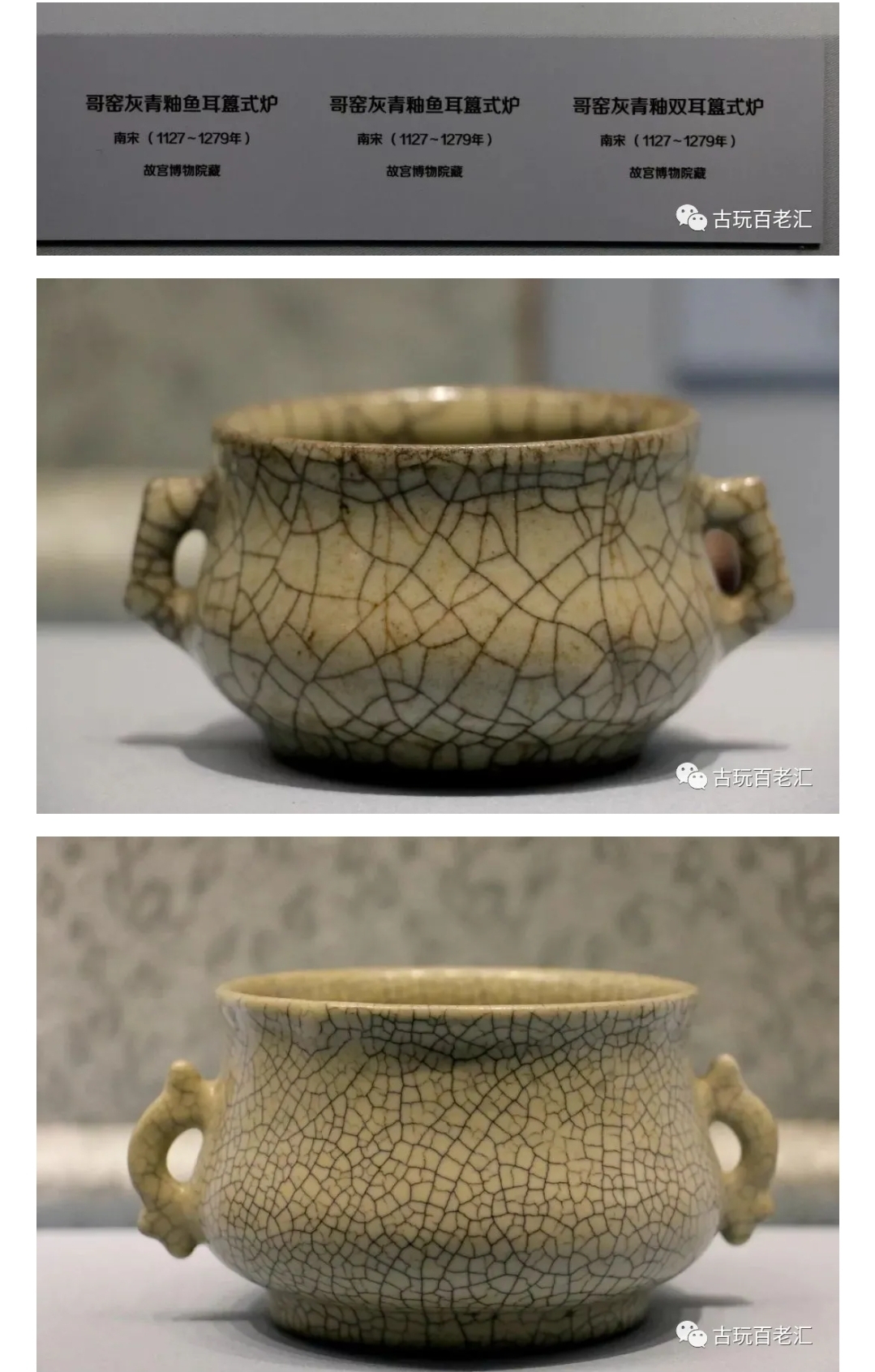
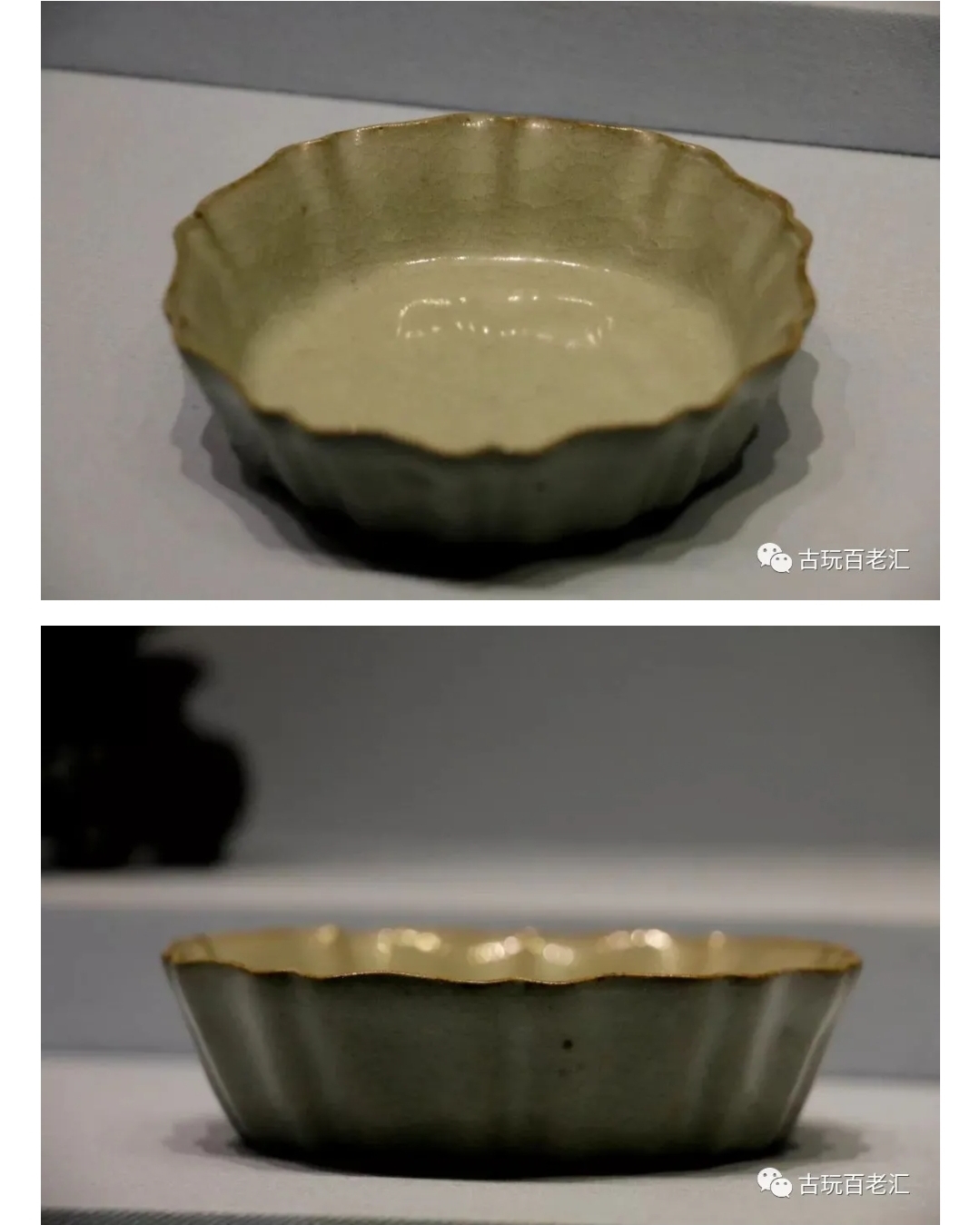
Ge Yao (Ge Kiln) was notably absent from any written records during the Song and Yuan dynasties. Knowledge of this ceramic ware largely emerged during the Ming period. In the text 《宣德鼎彝谱》, Ge ware was listed as one of the six celebrated ceramic types in the Ming Palace collection. Wen Peng (文彭), son of the renowned Ming painter Wen Zhengming (文徵明), noted that the book was presented to the Ming court during the Xuande reign by court official Lu Zhen (吕震). However, it was only published for public circulation around 1534 during the Jiajing period.
 |
 |
 |
| Southern Song Ge wares from the Beijing Palace Museum |
Two Ming-period texts frequently referenced in discussions on the origin of Ge ware are:
《春风堂随笔》by Lu Tan (陆探) - It describes two Zhang (章) brothers from Chuzhou (now Longquan) who produced celadon wares during the Song dynasty. The elder brother (哥) crafted black paste crackled glaze wares, while the younger (第) produced white paste wares. Since "Ge" means elder brother in Chinese, these black paste wares were termed Ge Yao (哥窑).
《遵生八笺》by Gao Lian (高濂) (1591 AD, Wanli reign) - Gao Lian argued that there was little distinction between Guan and Ge wares (官哥不分). Both were produced in the Phoenix Mountain area of Hangzhou. Guan wares were made for the palace by the government-run Xiuneisi (修内司), while Ge wares came from private kilns.
A Yuan dynasty account in 《至正直记》 by Kong Qi (孔齐) provides another clue. In 1363, Kong Qi encountered a censer made at a kiln called Ge Ge Dong (哥哥洞) in Hangzhou. A friend, Wang De Weng (王德翁), remarked that it was almost indistinguishable from Guan ware. Some scholars propose that the term "Ge Yao" (哥窑) is an abbreviation of "Ge Ge Dong" (哥哥洞).
Ge ware is distinguished by its dual network of crackles, described as golden thread and iron wire (金丝铁线): dark crackles interspersed with finer, lighter ones. However, variations exist, including pieces with only dark crackles. Expert analysis suggests that most crackles were artificially stained to enhance this effect. Ge glazes range in color from rice-yellow to grayish-blue, and like Guan ware, often feature multiple glaze coatings.
Magnified studies reveal:
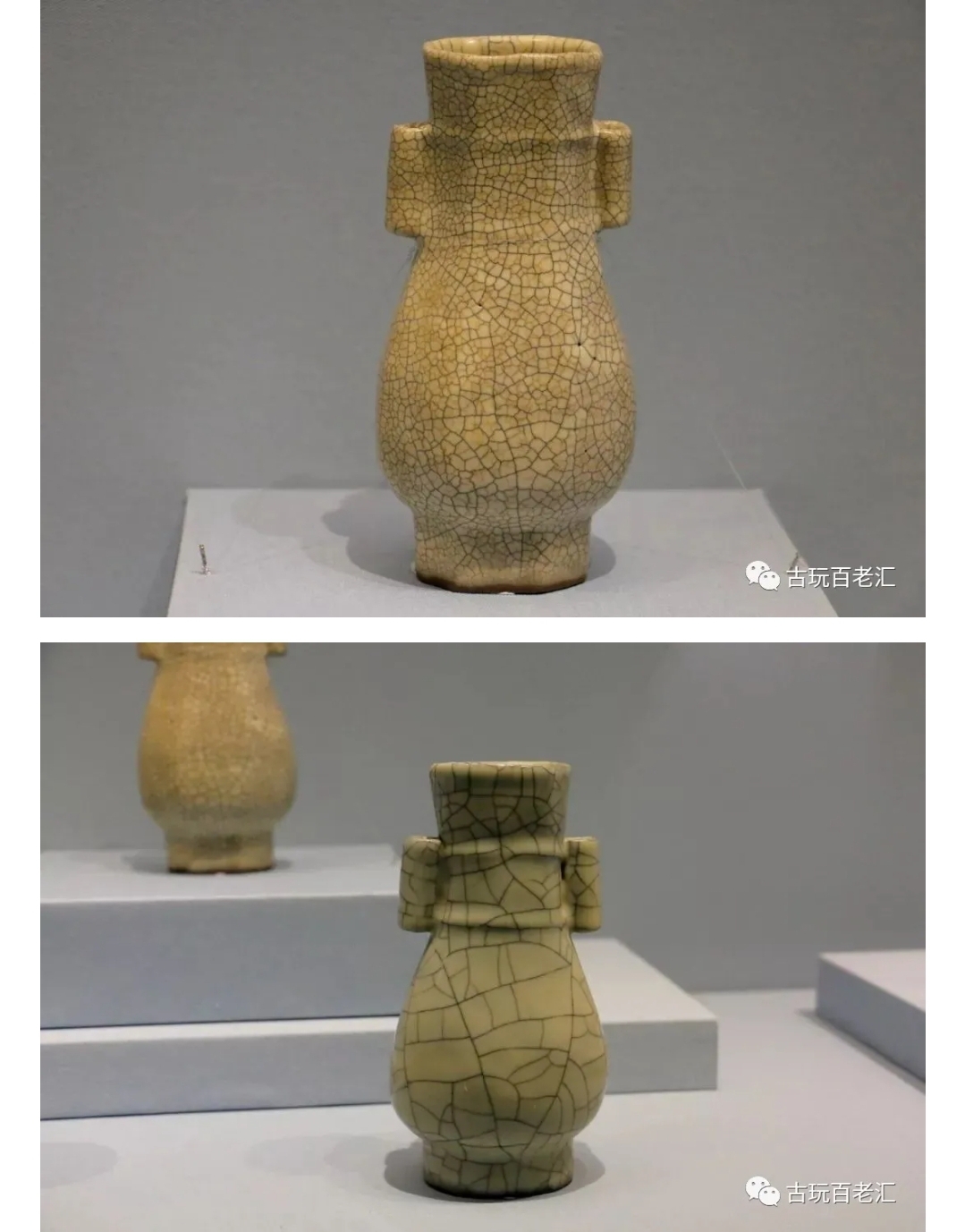 |
|
|
| Two examples, first showing that networks of large and small crackles and the second just large crackles |
 |
| Magnified 40 times view of the crackles |
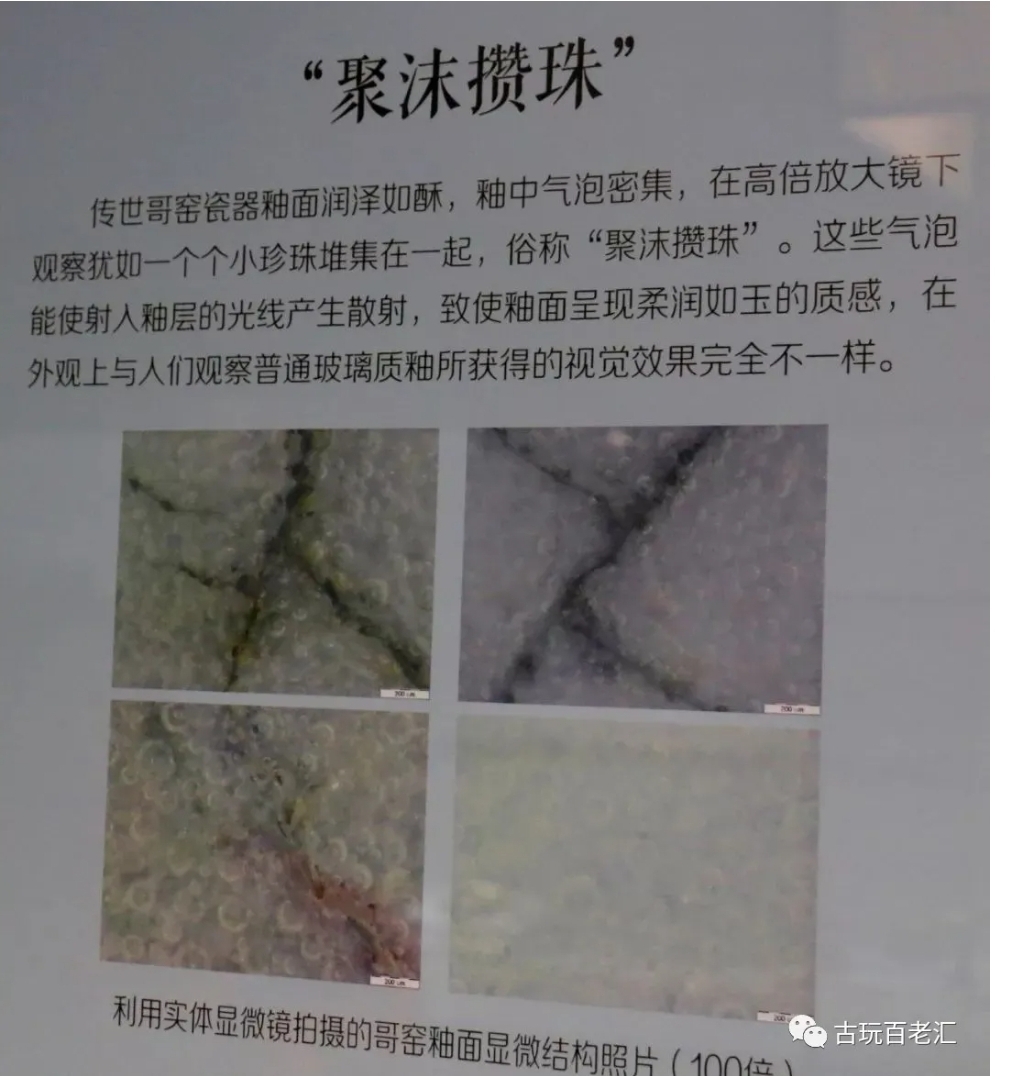 |
| Magnified 100 times view of pooling of bubbles in the glaze. The bubbles refracted the light and give the glaze the soft jade like look |
Archaeological surveys in Longquan uncovered two kiln sites at Xikou (溪口) and Xiaomei (小梅镇) that produced black paste wares with crackled glazes. These pieces typically feature a grayish-green glaze, differing from traditional Ge wares and are absent from the Beijing Palace collection. To avoid confusion, Chinese scholars distinguish them as Longquan Ge and extant Ge wares (传世哥窑).
 |
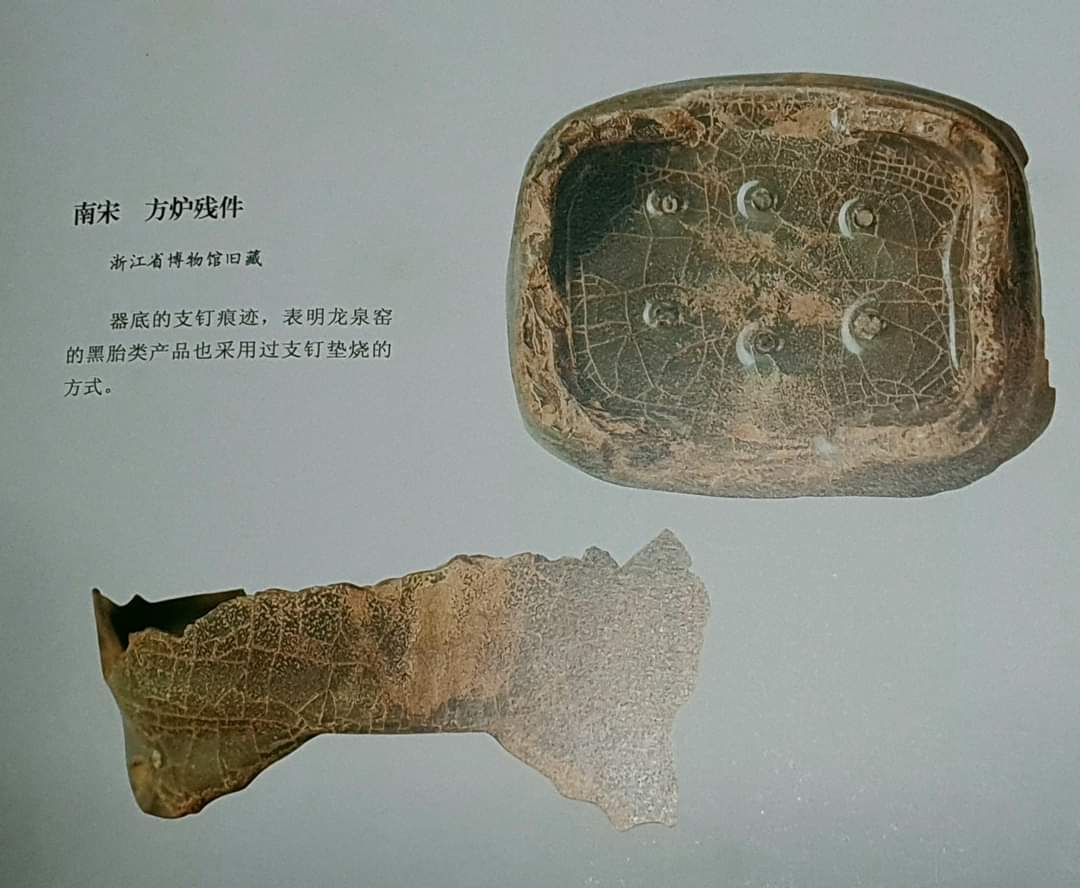 |
| Shards from Xikou kiln |
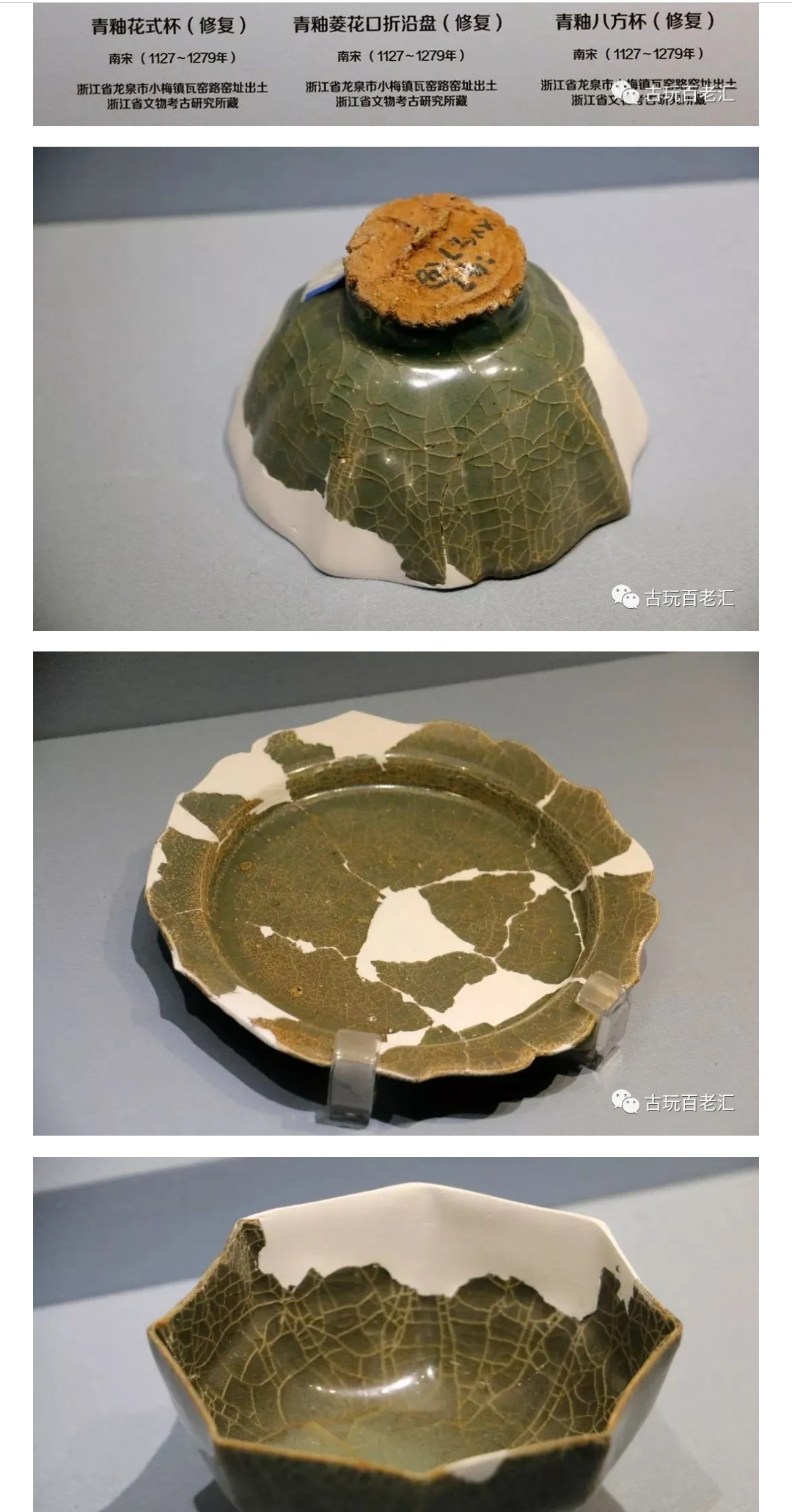 |
 |
| Sherds from Xiaomei kiln (小梅窑) |
In 1996, the Laohudong site at Phoenix Mountain, Hangzhou, was discovered. Spanning 2,000 sq meters, it contained three dragon kilns, biscuit-firing furnaces, and kiln furniture. Tens of thousands of shards, similar to extant Guan wares found in the National Palace Museum (Taiwan), Beijing, and the British Museum, were unearthed.
Chinese scholars generally agree that Laohudong is the site of Song Xiuneisi Guan ware and Yuan Ge ware. Many also believe it corresponds to the Ge Ge Dong mentioned in Kong Qi's text.
.jpg) |
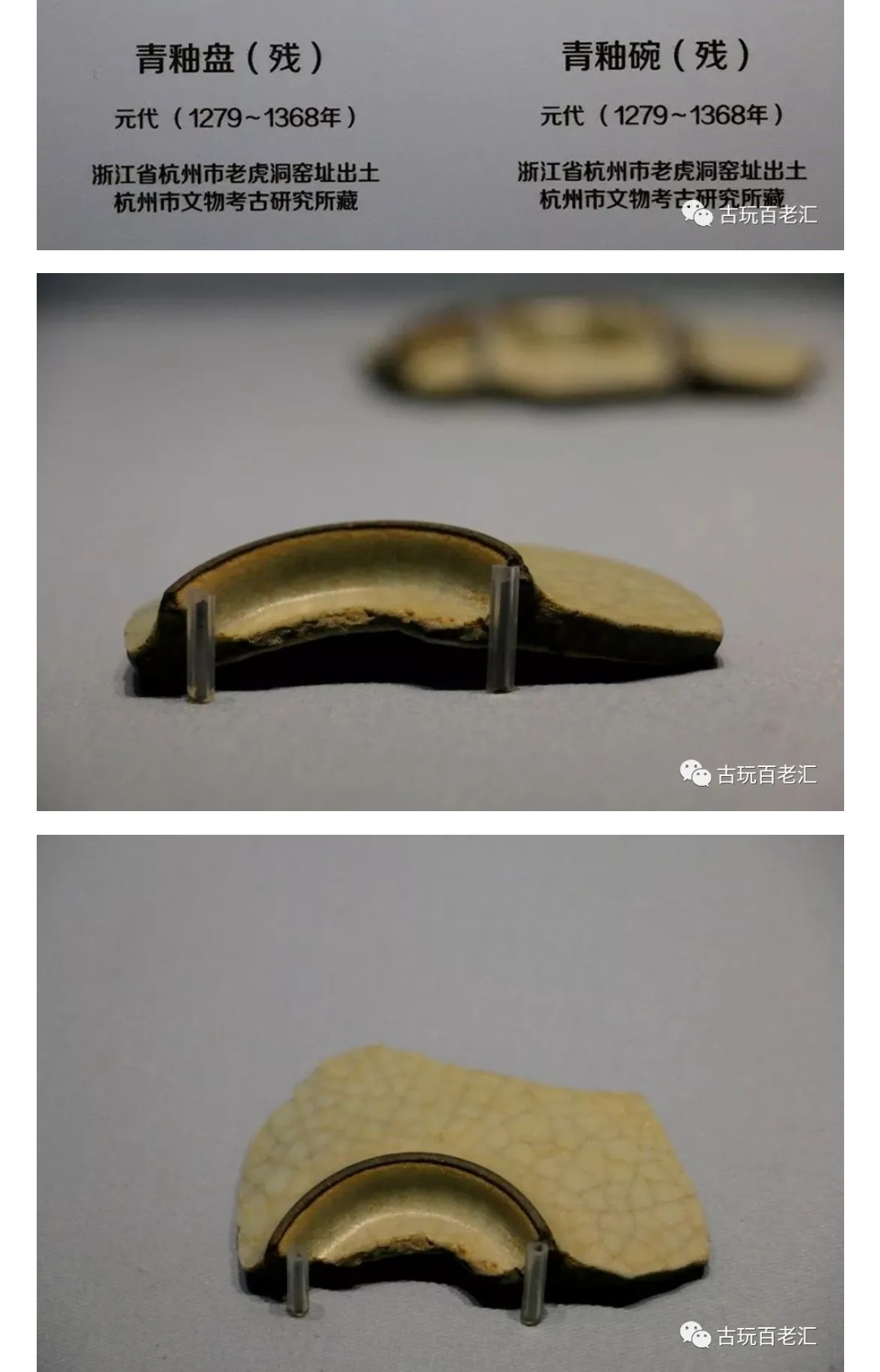 |
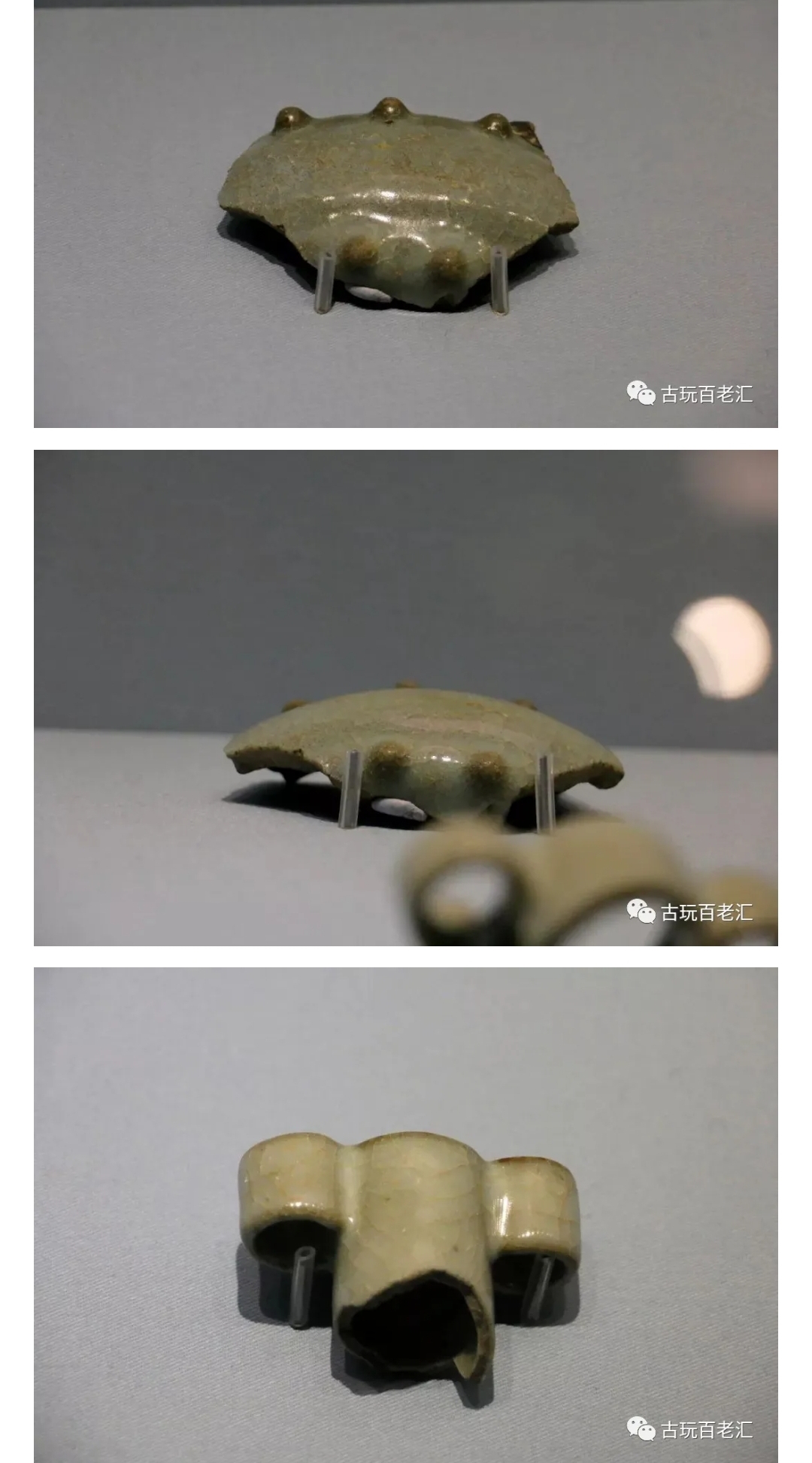 |
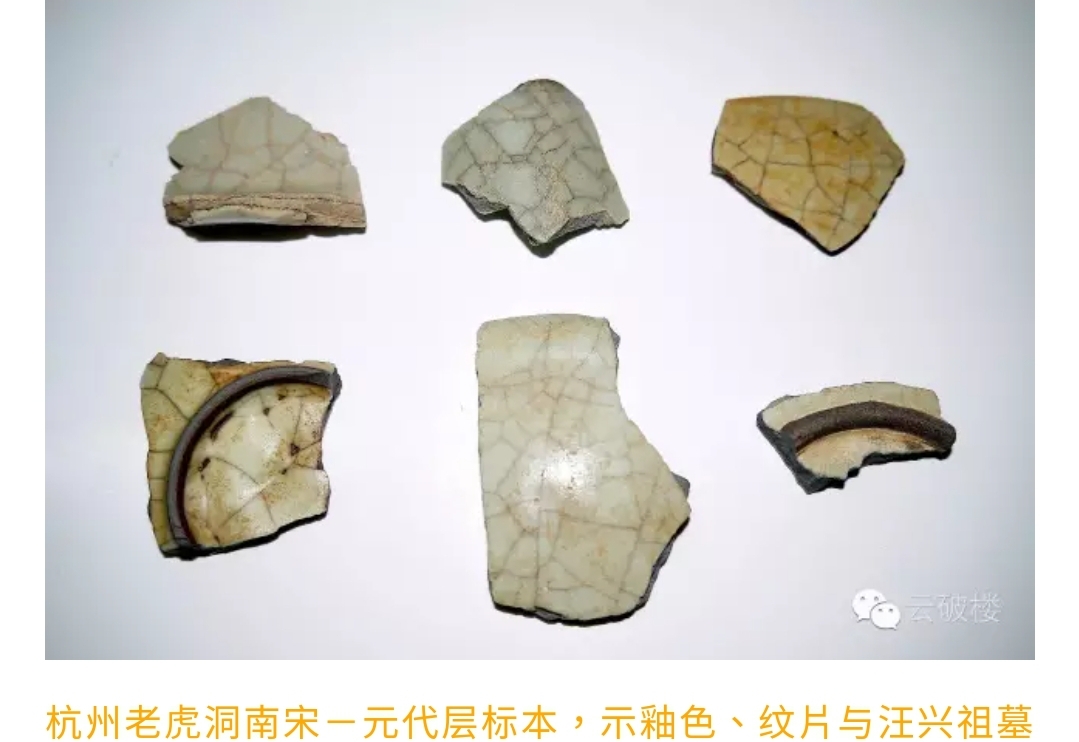 |
Yuan Ge Examples from Hangzhou Laohu Dong (Tiger Cave) kilns |
Beijing Palace Museum conducted chemical composition analyses on paste and glaze samples from Laohudong, extant Ge, Longquan Xikou, Xiaomei, and Jingdezhen Ming/Qing Ge types. The results showed that extant Ge samples clustered with Laohudong shards, confirming their close relationship. Other samples formed distinct clusters.
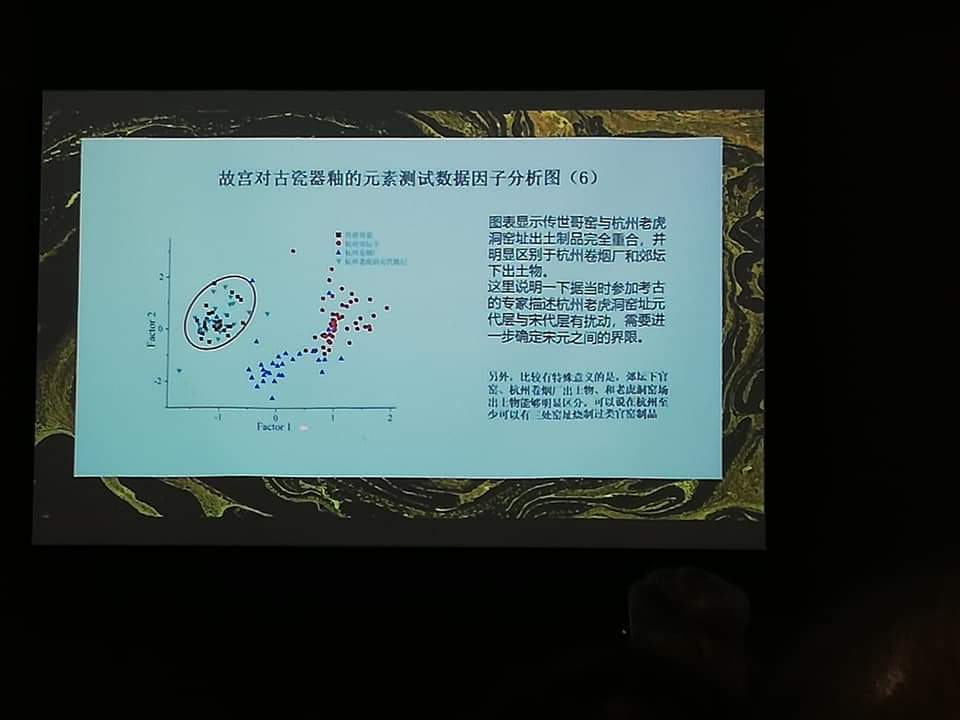 |
| From the chart based on analysis of the glaze chemical composition conducted by Beijing Palace Museum, the samples from Laohu Dong and Extant Ge fall within the same circled cluster |
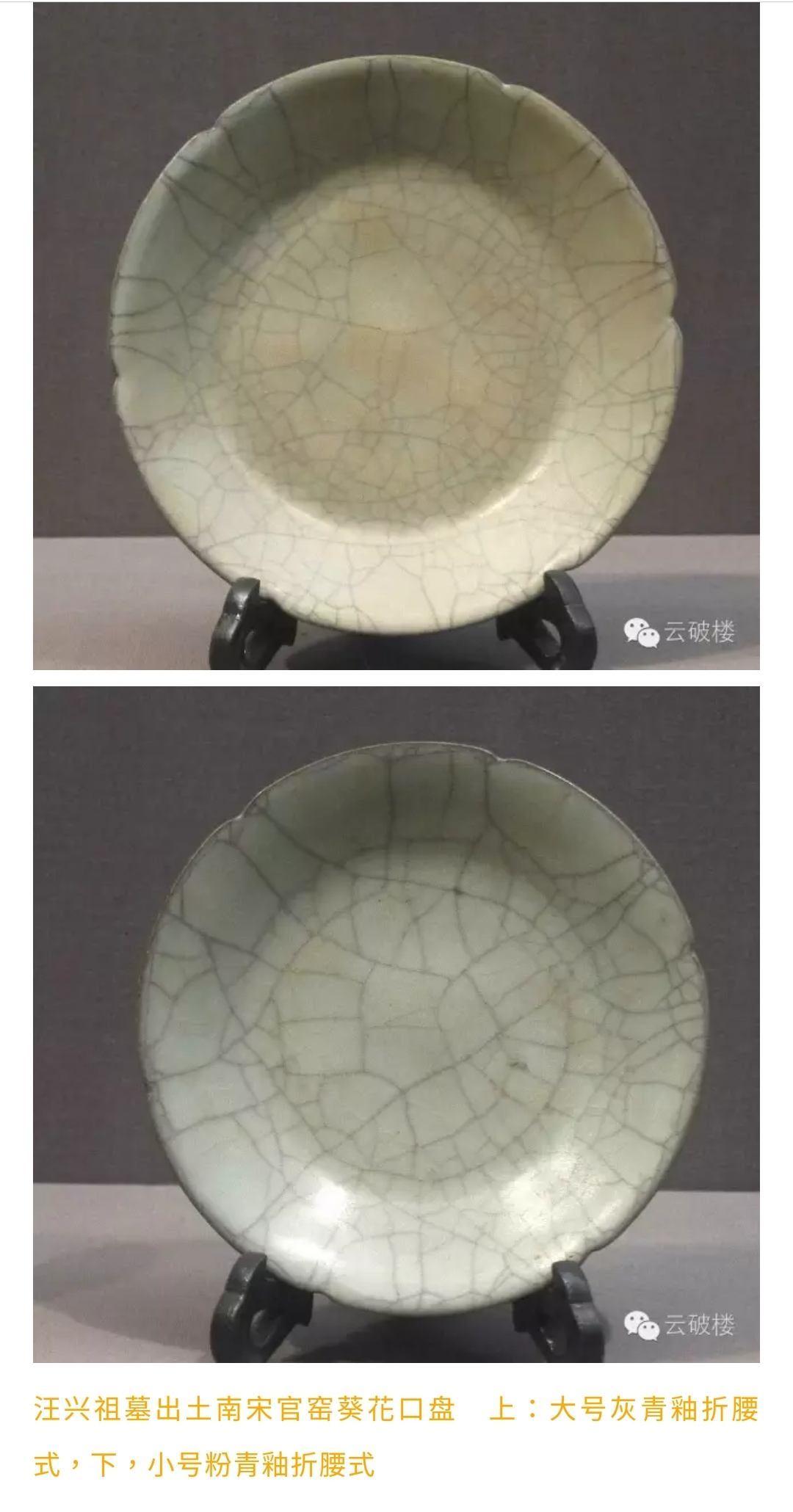 |
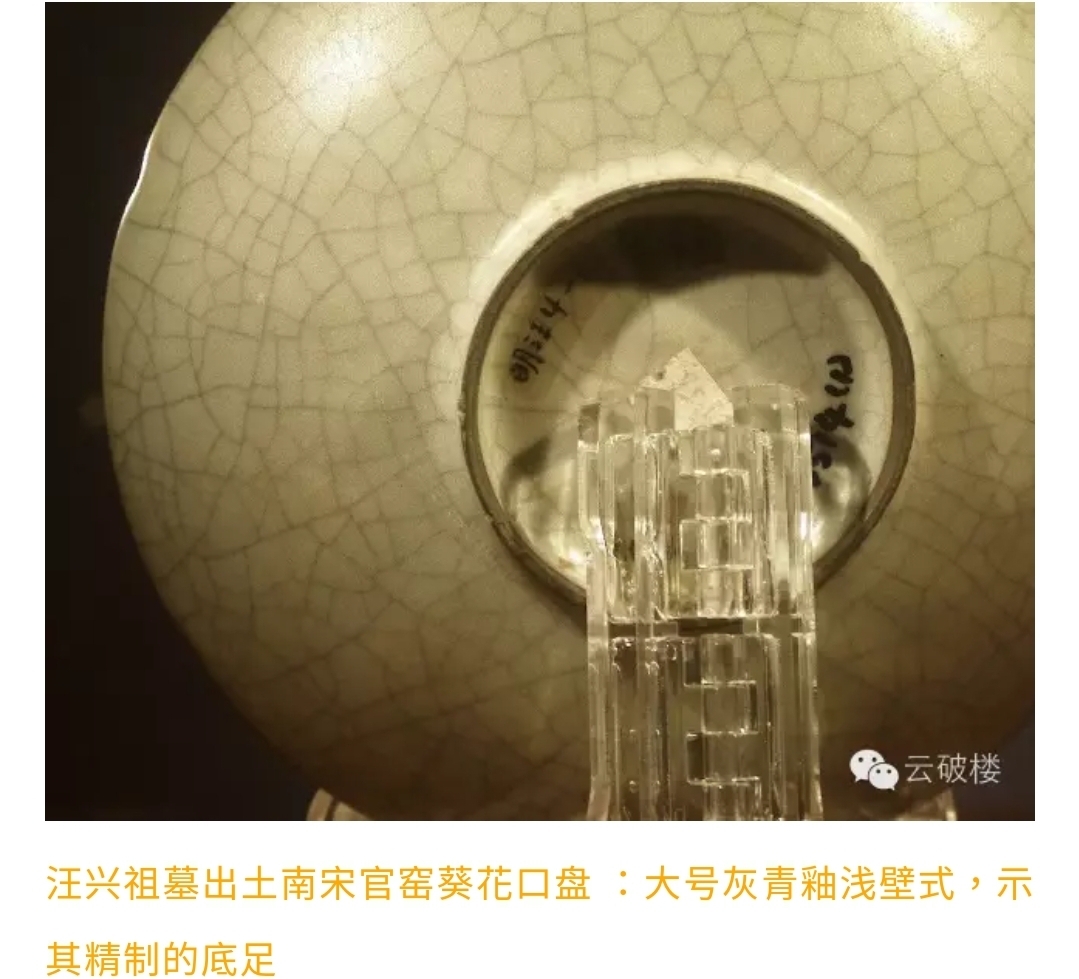 |
| Ge Dishes from the grave of Wang Xing Zu, a founding general of the Ming Dynasty. There is no consensus to the dating, varying from Southern Song to Yuan |
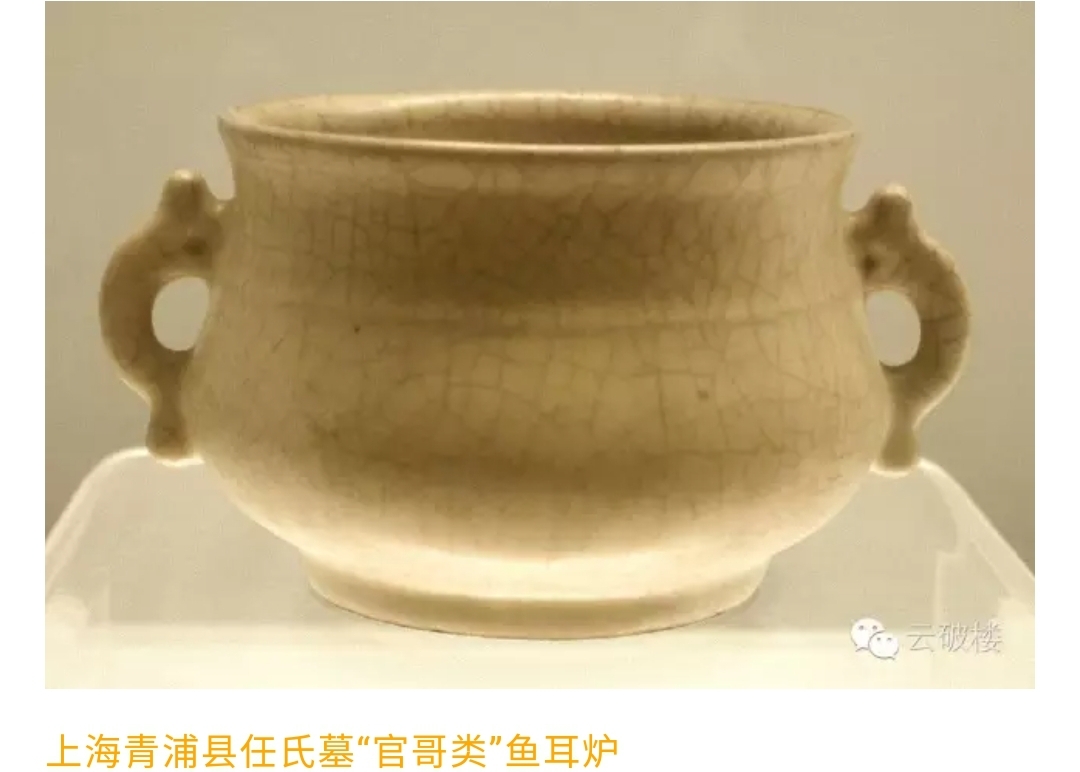 |
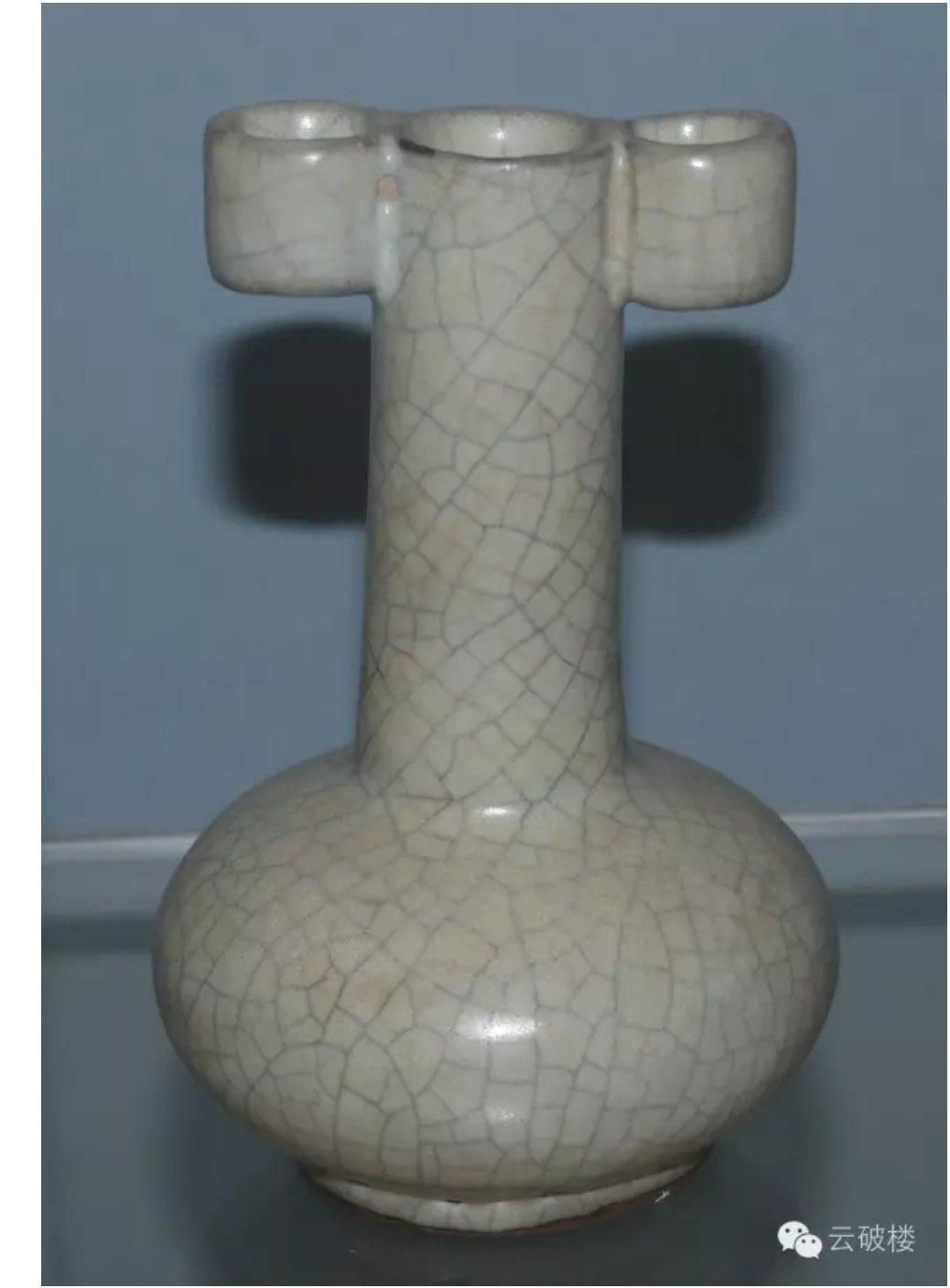 |
| Two Ge examples from a Ren surname grave in Shanghai Qingpu county |
Since the Ming period, Ge glaze ceramics have been widely copied at kilns in regions such as Jiangxi Jingdezhen, Fujian Zhangzhou, Jiangsu Yixing, and Guangdong Shiwan.
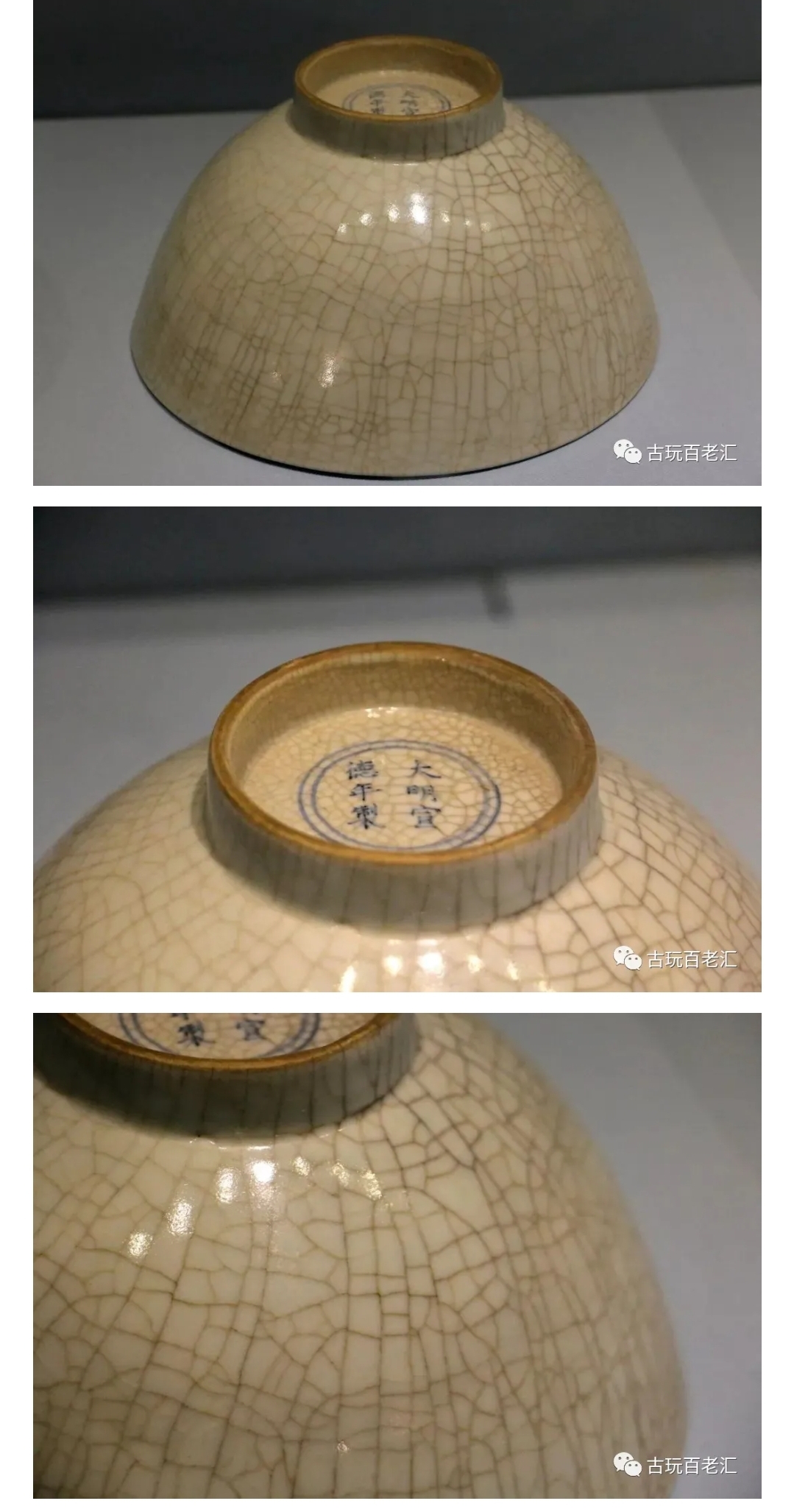 |
| Ming Xuande Ge glaze bowl (Beijing Palace Museum) |
 |
| Qing Yongzheng Ge type vase (Beijing Palace Museum) |
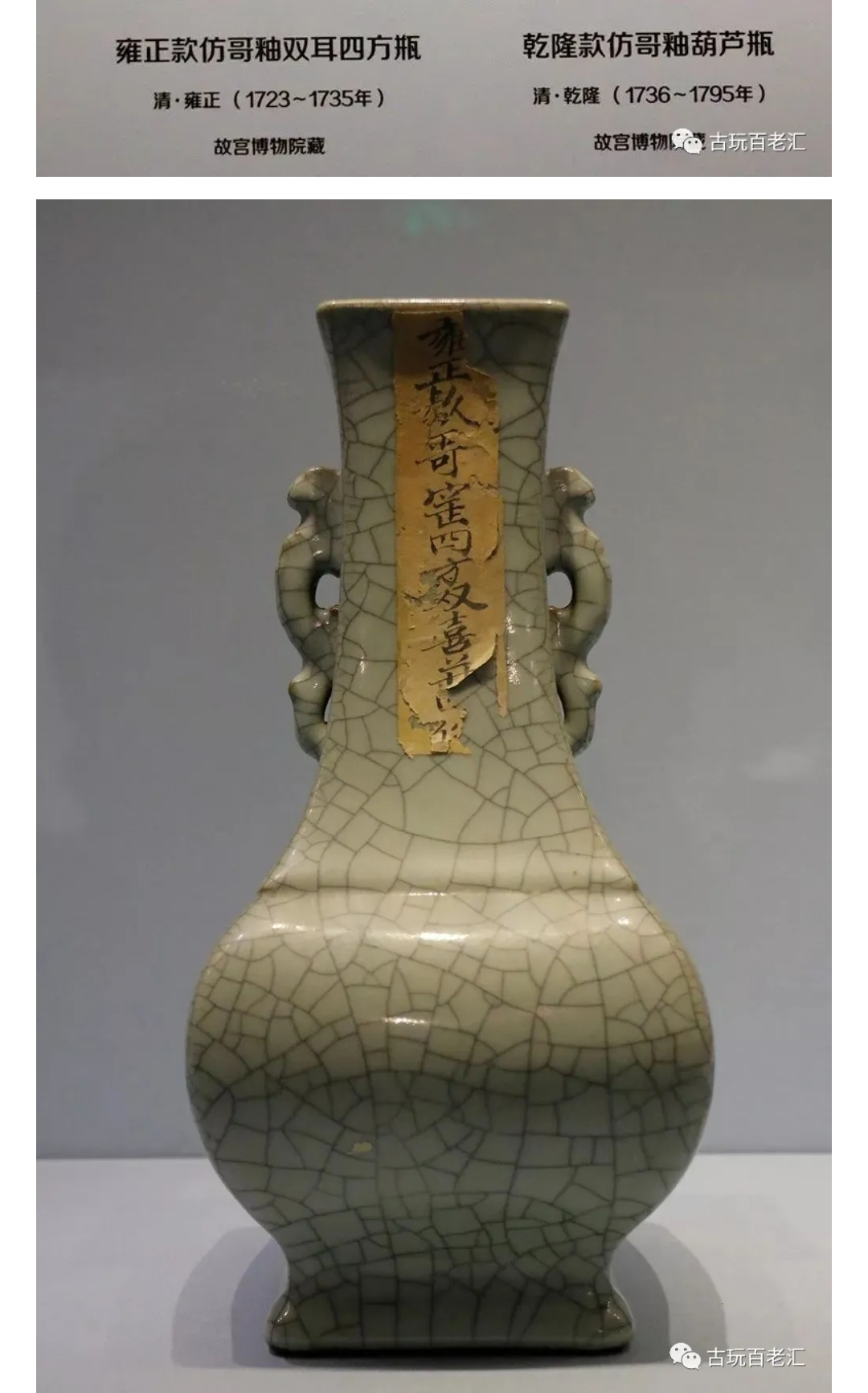 |
| Qing Yongzheng Ge type vase (Beijing Palace Museum) |
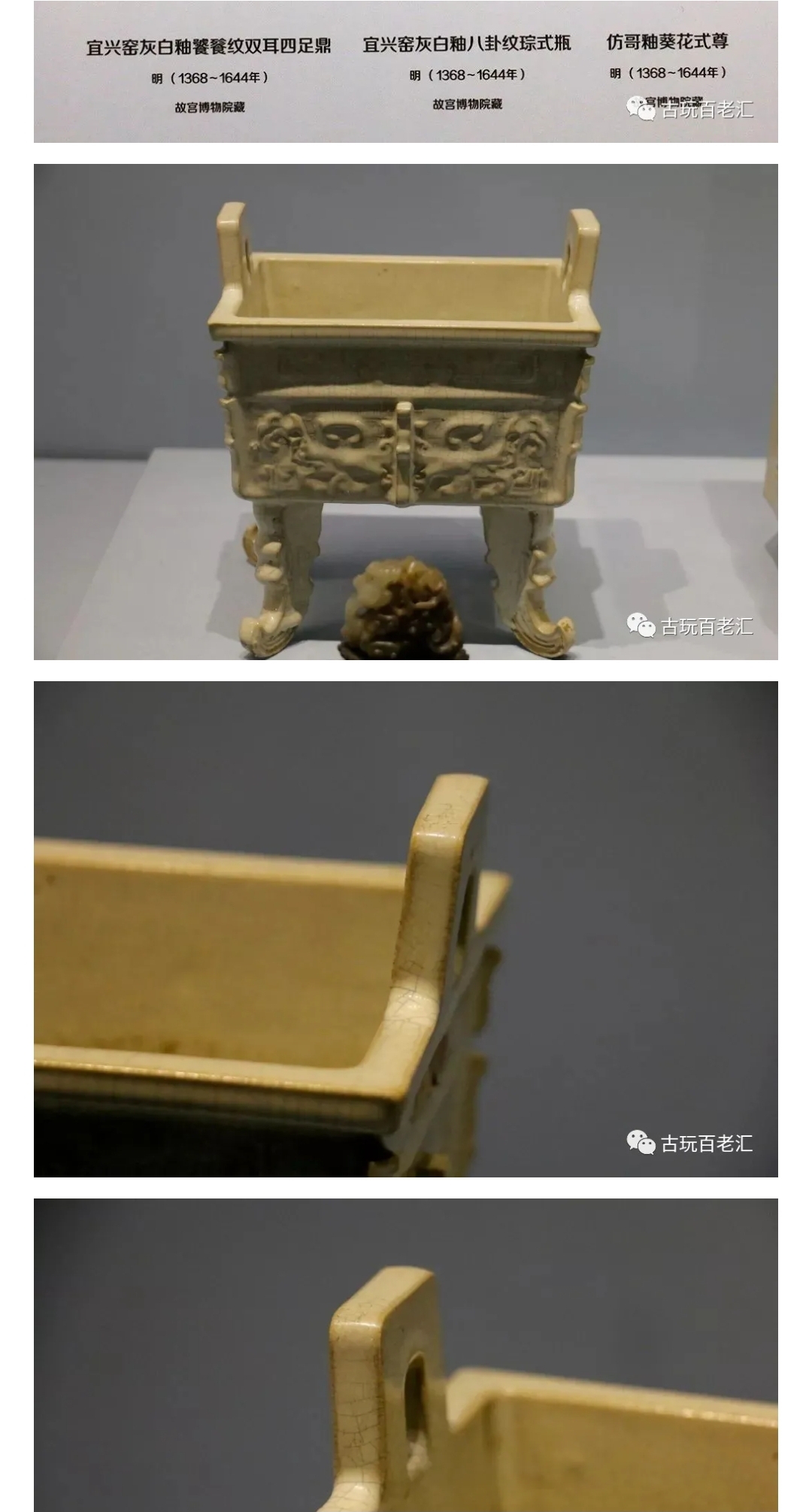 |
| Qing Yixing Ge glaze Ding vessel |
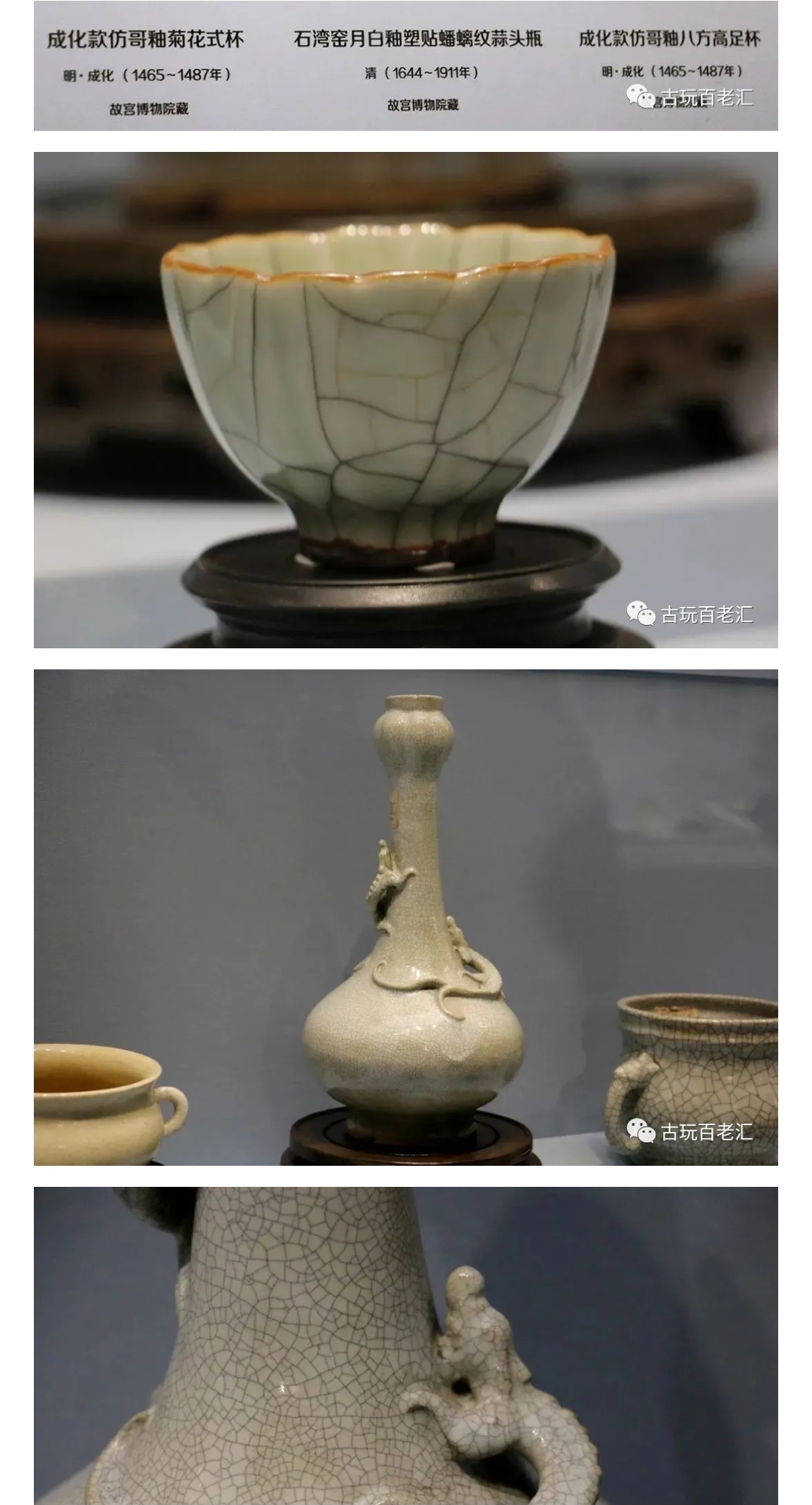 |
| Top Ming Chenghua Ge bowl, bottom Qing Shiwan Ge Glaze vase with applique chi dragon |
The Longquan Ge described by Lu Tan in 《春风堂随笔》 is distinct from the extant Ge ware in the Palace collection. Guan and extant Ge wares share a common origin, validating Gao Lian’s theory. Since the Ming period, Ge glaze ceramics have continued to inspire artisans and collectors alike.
Written by: NK Koh (2 Feb 2021), updated: 27 Feb 2025